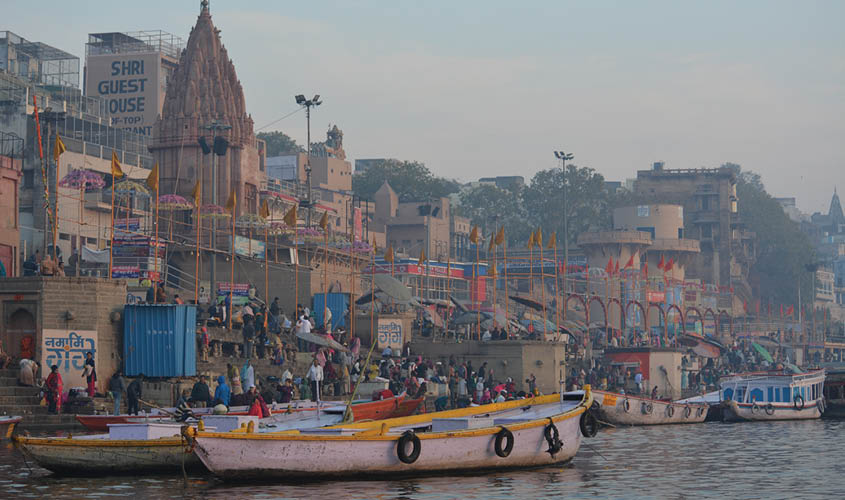NEW DELHI: The holy city of Varanasi, also the parliamentary constituency
Locals said that the sustained cleaning of the river ghats in Varanasi, coupled with infrastructure support to check the flow of polluted water, has made Ganga cleaner than before. They said that the footfall of tourists, particularly foreigners, has gone up significantly at the ghats of Varanasi in the last couple of years since the launch of the Ganga cleaning projects. Vinod Manjhi, a boatman at the Assi Ghat in Varanasi, said: “Earlier, tourists would avoid visiting the Ganga ghats as these were in a bad shape. The filth around the ghats was a big deterrent for foreigners in particular. But the river banks are very well maintained now and there has been a gradual rise in the number of tourists.”
The government has hired a private concessionaire for cleaning Varanasi’s 84 ghats for three years at the cost of Rs 5 crore per year. Similarly, the government will spend Rs 13 crore for cleaning 94 ghats in four cities of Uttar Pradesh—Kanpur, Prayagraj, Bithoor and Mathura-Vrindavan.
Under the Namami Gange programme, for Varanasi, the upcoming sewage treatment plant (STP) at Rammana with a capacity of 50 MLD will treat the polluted water coming from Assi river, which is a major source of pollution in the Ganga. The current sewage generation in Varanasi is estimated at 300 MLD, which is expected to increase to 400 MLD in the year 2035. At present, the three operational STPs in the city have 102 MLD treatment capacity. However, with the upcoming 3 STPs, the total sewage treatment capacity will go up to 412 MLD, which is adequate to meet the demand until 2035.
Similarly, the Ministry of Ganga Rejuvenation under Nitin Gadkari has put a thrust on Ganga cleaning activities at the ongoing Kumbh in Prayagraj. The government sanctioned projects for treatment of sewage water coming from 53 drains in Prayagraj for six months in view of the Kumbh. Further, Rs 113 crore was sanctioned for over 47,000 toilets at the Kumbh.
This is in addition to the ongoing sewage treatment facilities at Prayagraj and its adjoining areas. Officials said three new STPs at Naini, Jhusi and Phaphamau in Prayagraj would treat 72 MLD of sewer water before being discharged into the Ganga.
The Namami Gange project consists of 261 projects, 194 of which deal with constructing STPs, rural sanitation and bioremediation largely spanning Uttar Pradesh, Uttarakhand, West Bengal, Bihar and Jharkhand, which are responsible for most of the pollution.
Most of the 221 projects under the Namami Gange Mission worth Rs 25,563 crore are at advanced stages of completion.
Officials said the ministry introduced the hybrid annuity model (HAM) in sewage treatment, similar to the one in the roads and highway sector, for expediting the execution of the projects.
Works on two projects (50 MLD in Varanasi and 82 MLD in Haridwar) are nearing completion under the HAM and other projects that are sanctioned include Naini, Jhusi, Phaphamau, Unnao, Shuklaganj, Mathura, Kanpur, Mirzapur, Gazipur and Farrukhabad in Uttar Pradesh; Digha, Kankarbagh and Bhagalpur in Bihar; and in Howrah, Bally, Kamarhati and Baranagar in West Bengal, apart from Tolly’s Nalla in Kolkata.
“These sewage management projects will take care of the current gap in sewage treatment and also sustain the sewage treatment for future,” a Namami Gange official added.

